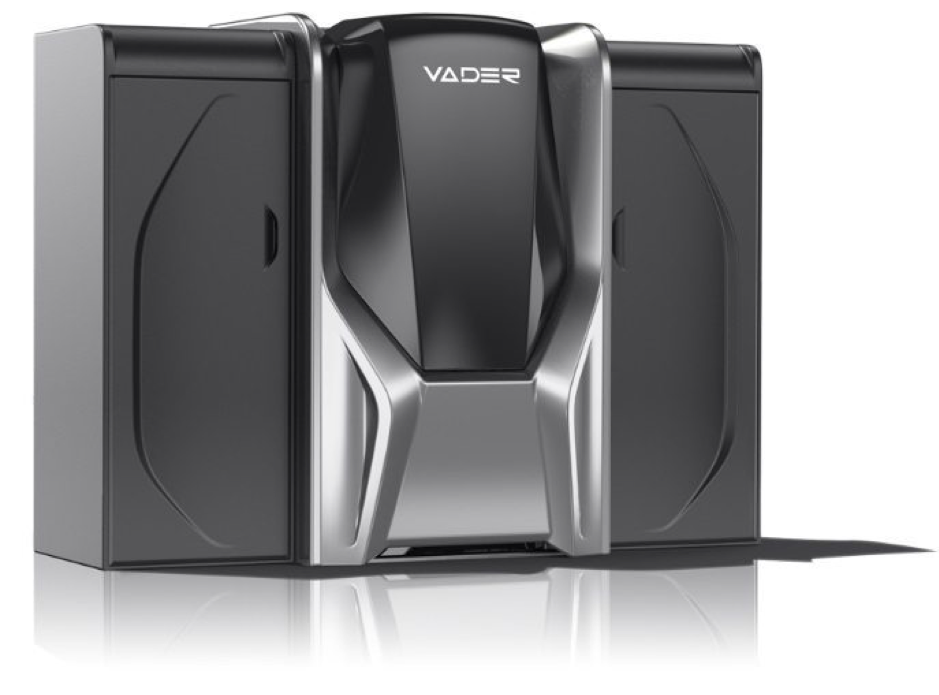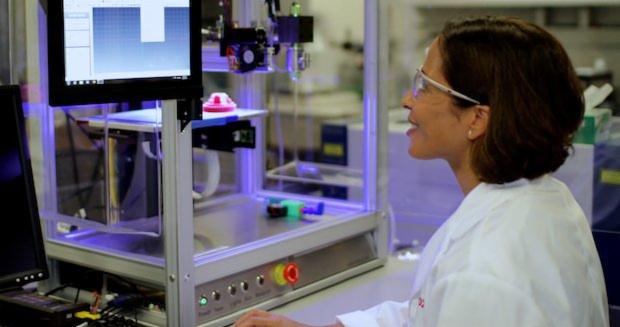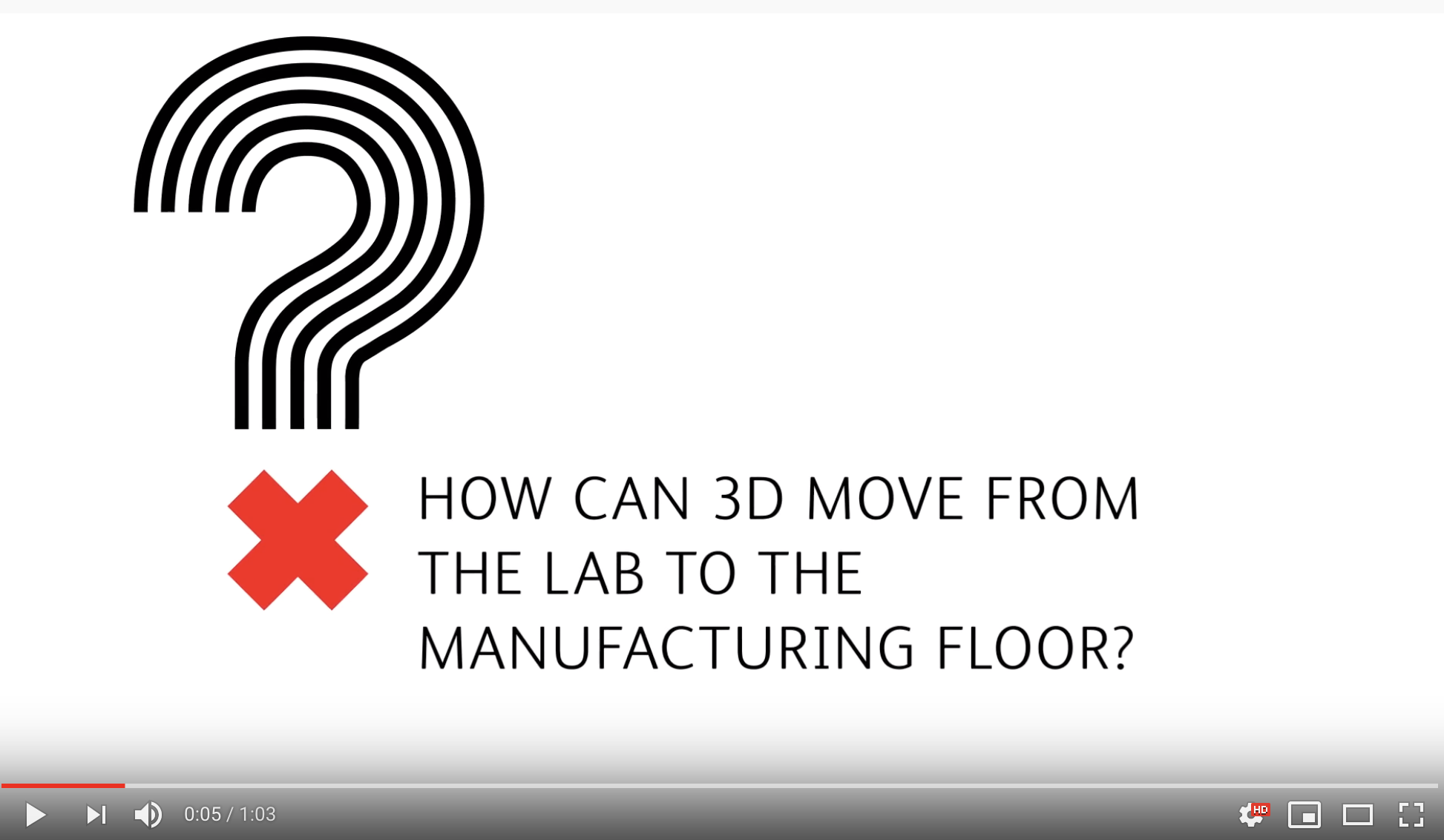3D a Diversity of Applications and Technologies
With innovation at our core, Advanced-UK has long been a leading proponent of 3D printing solutions, and we’ve been part of the significant uptake across multiple industries, but especially in the fields of construction, architecture, and civil engineering, also referred to as the AEC industry. Along the way, we’ve engaged in new sectors too, with law firms and bio-mechanical engineers also realising that technology can help to solve long-standing problems.

As a Xerox Platinum Partner, our activities in the 3D printing sphere received a boost with the July 2019 announcement of Xerox’ acquisition of New York-based metal 3D printing leader, Vader Systems and with it, it’s Magnet-o-Jet liquid metal additive manufacturing technology. This technology prints objects with precision, building your three-dimensional design through the layering of 1,000 liquid metal droplets per second. Interestingly, this venture is complementary to the core of Xerox: they have decades of experience in so-called ‘jetting’, the process of placing toner on paper with extreme accuracy.

3D Printing for Architects and Construction Firms
The traditional approach of using paper, cardboard, and wood to create conceptual models can consume hundreds of hours. Consider this from Gavin Henderson of the firm of architects, Stanton Williams:
“I take a pencil and make marks on paper. I take pieces of card and hold them together, reconfigure, cut, pin, add, fold, subtract, assemble, carve, disassemble, reassemble.”
Time is of the essence, and cost management is paramount. The opportunity to progress instantly from CAD or Building Information Modelling (BIM) solutions like Revit to precise 3D models is of crucial importance. Consider also that the typical project is rarely completed on just one iteration: multiple adjustments to models are required to reflect the spatial awareness of both the site and its surrounding environment.
With so many elements in construction being repetitive, a single 3D component may be replicated many times, or modified simply via editing the BIM file, versus endless prototyping with paper and wood.
Ultimately, the 3D printed models must be shared with the prospective clients. Here too, there’s an advantage with 3D, because the materials may be selected to ensure adequate robustness such that they can be shipped without risk of breakage.
This 63-second video gives some insight to 3D printing
Five 3D Printer Technologies
It’s useful to be aware of the five primary 3D printer technologies:
Fused Deposition Modelling (FDM)
FDM is by far the simplest approach, and this is what’s used by extrusion machines. A softened plastic filament is extruded while being repositioned continuously. Such machines tend to use polylactic acid (PLA) and acrylonitrile butadiene styrene (ABS). Such printers are ideal for rough prototypes, but the end result is often somewhat crude and the finish substandard.
Binder Jetting
Binder jetting relies on fine powders sprayed onto a base, and when combined with additional chemicals (curing agents) the powders are hardened. This is a most versatile form of printer, and variations enable printing with diverse materials, including metals.
Vat Polymerisation
Vat Polymerisation is based stereo-lithography: this cures a liquid polymer resin with laser beams of ultraviolet light. Offering superior precision, the applications can even include parts for the medical, aerospace and automotive sectors.
Powder Bed Fusion
Powder bed fusion also involves powdered raw materials, but the technique relies on using lasers to heat the powders precisely, thus fusing the layers with absolute precision.
Directed Energy Deposition (DED)
A 3D DED printer is the pinnacle of current 3D technology, and this design focuses high-energy laser or plasma arcs to fuse metals together. Delivering incredible precision and strength, the costs are prohibitive.
You will appreciate that fused deposition modelling is at the most common system for the ‘typical’ desktop printer used for proofs of concepts and prototyping, but most serious applications require binder jetting as a minimum.
Is an In-House 3D Printer Right for You?
Most clients start their 3D printing journey with an eye to purchasing the physical technology, but is this the best choice? The price of a 3D printer ranges from £1,000 for a small desktop extrusion model through to industrial machines with price tags of well over £1m.
At the £1,000 price point, anticipate that the maximum size of object to be printed is perhaps 10cm, but it might cost £25,000 to purchase a machine capable of producing quality models of 25cm. From there, now you’ve envisioned printing a replica building of 1.5m, be prepared to pay as much as £250,000.
Operationally, though, it’s not just purchase, maintenance and support which must be factored into the cost, but also the price of the raw materials. At the bottom end of the spectrum, there’s polylactic acid, which is both versatile and inexpensive, but as soon as your project requires polyvinyl alcohol then the costs are at the other extreme.
The environment for your 3D printer is also an essential consideration. With many moving parts, the noise renders them impossible to use within an ordinary office. There are also specific ventilation concerns with all models.
3D-as-a Service
To overcome the costs and complexities of purchasing, maintaining and supporting your own in-house 3D printer, Advanced-UK offers an alternative: our 3D-as-a-Service approach provides for 24-hour turnaround in the UK upon receipt of your digital files and specifications.
Outsourcing your 3D printing means your staff can concentrate on your in-house skills, while the final finishing (such as colourisation) may be completed by our bureau service or your in-house team.
To prepare an accurate quotation, we need to see your 3D design files, or your scale 2D drawings. We accept all file formats including stl, dwg, iges and Revit. We will then discuss your process requirements (such as powder, SLA or multi-jet), output sizes, volumes, finishes and certain other requirements.
Our quotation turnaround service is fast! With three bureau locations across the UK, you will be assured of accurate delivery timeframes and of your project being completed to the highest of industry standards.
How Advanced-UK can Help
As one of the leading Xerox Platinum Partners in Europe, coupled with our 28-year history of delivering integrated solutions, Advanced-UK has a team of specialists fully qualified and experienced in the delivery of the 3D printing solutions outlined in this article.
We'd love to have a chat and guide you through the possibilities!
Have you read:

⏱ 5 Second Summary
Part of our Technology Series
3D printing is fast-evolving technology, with new applications across multiple business sectors being realised on a daily basis. Initially thought to be useful only for manufacturers, everyone from law firms through to architects and construction companies are benefitting. We introduce the technology and explore some of the primary considerations as to whether the investment should be in-house / on-premise or is it best to adopt 3D Printing-as-a-Service.
Recent Posts
Humperdinck Jackman
Director of Consulting Services
Humperdinck has a 30-year career spanning Document Management Systems (DMS), data protection, Artificial Intelligence, Data Protection and Robotic Process Automation. With many articles published in print internationally, he believes the advances in office technology are such that we're entering the 4th Industrial Revolution. Now Director of Marketing and Consulting Services at Advanced UK, he's as active with clients as he is in endeavouring to write original blog articles.



